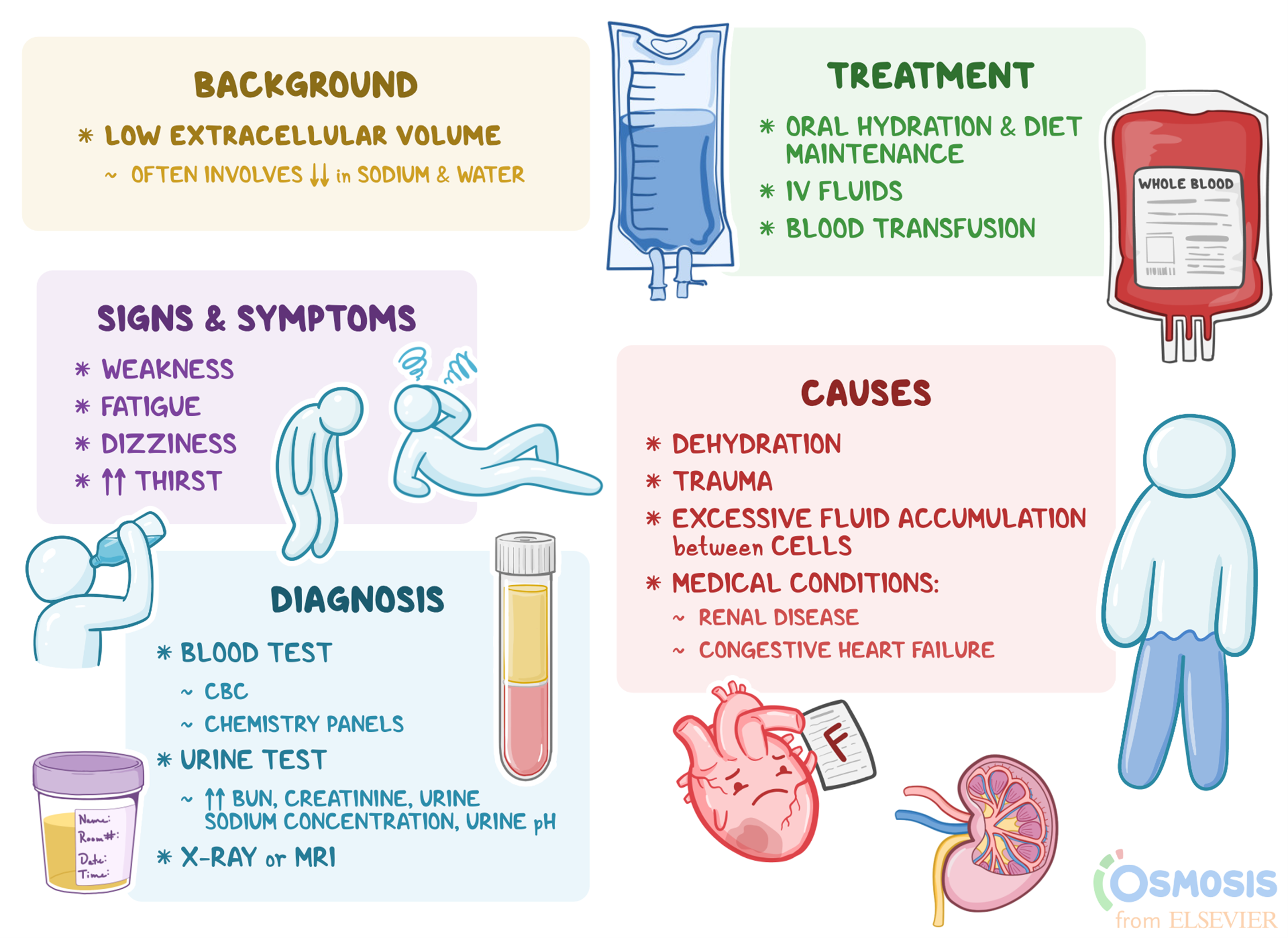Postpartum Hemorrhage > Maternal & Newborn
Exam Review
Nursing Diagnosis
Total Questions : 5
Showing 5 questions, Sign in for moreA nurse is caring for a client who had a vaginal delivery and is experiencing postpartum hemorrhage due to uterine atony.
Which of the following actions should the nurse take first?
Explanation
Massaging the uterine fundus gently is the first action that the nurse should take to stimulate uterine contractions and control bleeding due to uterine atony.Uterine atony is the most common cause of postpartum hemorrhage and occurs when the uterus fails to contract after delivery.
Choice A is wrong because administering oxytocin as prescribed is a secondary action that can be taken after massaging the uterine fundus if bleeding persists.Oxytocin is a medication that promotes uterine contraction and reduces blood loss.
Choice C is wrong because starting an intravenous line with a large bore catheter is a tertiary action that can be taken after massaging the uterine fundus and administering oxytocin if bleeding continues.An intravenous line can provide fluid replacement and blood transfusion if needed.
Choice D is wrong because placing the client in a side lying position is not a priority action for postpartum hemorrhage due to uterine atony.This position may help reduce pressure on the vena cava and improve blood flow, but it does not address the underlying cause of bleeding.
A nurse is reviewing the laboratory results of a client who had a significant postpartum hemorrhage.
Which of the following findings indicates a need for blood transfusion?
Explanation
This indicates a need for blood transfusion because it is below the normal range of 12 to 16 g/dL for women.
Hemoglobin is the protein in red blood cells that carries oxygen to the tissues.A low hemoglobin level can cause symptoms of anemia, such as fatigue, weakness, shortness of breath, and dizziness.
Choice B is wrong because hematocrit 30% is within the normal range of 37 to 47% for women.
Hematocrit is the percentage of red blood cells in the blood.A low hematocrit can indicate blood loss, but it is not a criterion for blood transfusion by itself.
Choice C is wrong because platelets 150,000/mm3 are within the normal range of 150,000 to 450,000/mm3 for both men and women.
Platelets are the cells that help with blood clotting.A low platelet count can increase the risk of bleeding, but it is not a criterion for blood transfusion by itself.
Choice D is wrong because potassium 4 mEq/L is within the normal range of 3.5 to 5 mEq/L for both men and women.
Potassium is an electrolyte that helps with nerve and muscle function.
A high or low potassium
A nurse is teaching a client who is at risk for postpartum hemorrhage about the signs and symptoms of hypovolemic shock.
Which of the following should the nurse include in the teaching? (Select all that apply)
Explanation
The correct answer is choice A, C, D and E.These are the signs and symptoms of hypovolemic shock, which is a life-threatening condition caused by severe blood loss.Hypovolemic shock can occur in postpartum women who have postpartum hemorrhage (PPH), which is excessive bleeding after childbirth.
Choice B is wrong because hypertension is not a sign of hypovolemic shock.In fact, hypotension (low blood pressure) is one of the signs of hypovolemic shock.
Normal ranges for vital signs in postpartum women are:
• Heart rate: 60 to 100 beats per minute
• Blood pressure: 110/70 to 140/90 mmHg
• Respiratory rate: 12 to 20 breaths per minute
• Urine output: at least 30 mL per hour

Question 34.
A nurse is preparing to administer methylergonovine to a client who has postpartum hemorrhage due to retained placental fragments.
Which of the following assessments should the nurse perform before giving the medication?
Explanation
Methylergonovine is a medication that stimulates uterine contractions and helps prevent or treat postpartum hemorrhage due to uterine atony or retained placental fragments.However, it can also cause an increase in blood pressure, so the nurse should monitor the client’s blood pressure before and after giving the medication.
Choice B. Temperature is wrong because methylergonovine does not affect the client’s temperature.
Choice C. Respiratory rate is wrong because methylergonovine does not affect the client’s respiratory rate.
Choice D. Oxygen saturation is wrong because methylergonovine does not affect the client’s oxygen saturation.
Normal ranges for blood pressure are 120/80 mmHg or lower for systolic and diastolic pressures respectively.
Normal ranges for temperature are 36.5°C to 37.5°C or 97.7°F to 99.5°F.
Normal ranges for respiratory rate are 12 to 20 breaths per minute.Normal ranges for oxygen saturation are 95% to 100%.
A nurse is evaluating the effectiveness of oxytocin infusion for a client who has postpartum hemorrhage.
Which of the following findings indicates that the medication is working?
Explanation
This indicates that the uterus has contracted well and the bleeding has stopped.Oxytocin is a drug that helps the uterus to contract and prevent postpartum hemorrhage (PPH), which is excessive bleeding after childbirth.
Choice B is wrong because the lochia flow should be moderate and dark red, not bright red.Bright red blood suggests active bleeding and possible PPH.
Choice C is wrong because the blood pressure is low and the pulse is high, which are signs of shock due to blood loss.PPH can cause a dangerous drop in blood pressure and lead to shock or death.
Choice D is wrong because the urine output is low and the specific gravity is high, which are signs of dehydration due to blood loss.PPH can cause fluid imbalance and kidney damage.
Sign Up or Login to view all the 5 Questions on this Exam
Join over 100,000+ nursing students using Nursingprepexams’s science-backend flashcards, practice tests and expert solutions to improve their grades and reach their goals.
Sign Up Now

